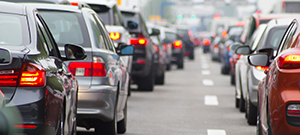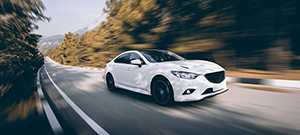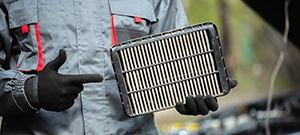10 fuel-saving tips
Oct. 28, 2022
Oct. 28, 2022
Whether you use coupons, rebates or discounts, it’s always nice to save money on big purchases, such as fuel. On top of these promotional offers, there are other ways you can lower your fuel bill daily.
Here are 10 tips you can use right now to keep more money in your pocket and fill up at the pump less often.
Turn off the engine when the vehicle isn’t in use
This is probably one of the most straightforward tips to implement. Turn off the engine when your vehicle is parked, even if you’re sitting in the car. This saves fuel and prevents unnecessary CO2 from being released into the air.
For example, turn off the engine while waiting to pick someone up. The same goes when you’re at a standstill, whether in a traffic jam or waiting in line at a border crossing or ferry terminal.
Accelerate mindfully
Slamming down the gas pedal or pressing hard to go faster only leads to problems.
In fact, hard acceleration requires a lot of power, causing your engine to burn more fuel.
Drive a consistent speed
This third tip goes hand in hand with gentle acceleration. As important as it is to gently tap the throttle when you want to increase your speed, it’s also important to make sure you keep your speed consistent.
Using cruise control is ideal if you must travel long distances and drive on highways for hours.
Likewise, it’s important to keep your speed steady, even in the city, to reduce your fuel bill. You don’t save time or money by allowing your speed to fluctuate by dozens of kilometres per hour in a short period. This kind of behaviour can be dangerous because driving at an inconsistent speed can affect your reaction time.
As you can see, moderation is the name of the game!
Lighten your load
Remove unnecessary objects and luggage from your car to lighten your load and use less fuel.
For example, it’s best to remove roof racks from your car when they’re not needed, as well as bulky items such as tires and toolboxes from inside the cabin.
Go easy on your brakes
Don’t worry; we’re not telling you to drive downhill without using the brakes!
We’re talking about conscientiously using your brakes. As an experienced driver, you’ve probably noticed that your vehicle slows down when you let off the gas. Consequently, coasting slows you down without having to use the brakes.
This not only reduces the wear and tear on your brakes, but also the fuel level in your tank since decelerating implicitly requires accelerating soon afterwards. This leads to higher fuel consumption.
This advice can be applied when the road conditions are ideal. However, you must use your brakes to slow down in many situations and should not play with fire.
Join a rewards program
Rewards come in many forms: credit cards in association with a bank and a gas station, digital point cards, instant rebates and more.
The list could go on and on. However, the fact remains the same: rewards programs can save you a lot of money. Make a comparison chart, and you’ll see!
Plus, combining some of these fuel-saving tips with a rewards program will allow you to save big.
JOURNIE Rewards is a great example of how to save money at the pump. The program allows you to collect points through an app (goodbye dozens of cards in your wallet) and receive discounts.
You can redeem the points for fuel, in-store purchases and car washes.
Use your air conditioning sparingly
Air conditioners are practical but not very economical. That’s right! Turning on the air conditioner in your car uses fuel.
Most systems have five levels for regulating how much cold air comes from the vents. We don’t advise having the air conditioner always pointed at the floor.
In any case, running your air conditioner at full blast for long periods can be detrimental to your health and cost you a lot of money.
If you’re attached to your air conditioner, it’s still a good idea to reduce how much you use it. This could mean alternating between using the air conditioner and rolling down the windows.
You can also try using the recirculation option, which recycles the interior air.
Carpool
Carpooling has been proven to help you save on fuel. Even if you only carry one extra person in your vehicle, you and your passenger will notice a difference in your fuel costs at the end of the month.
It can be used for work trips, outings with friends or long-distance travel. In fact, several carpooling platforms for intercity and inter-regional travel are trending online.
Large cities often have carpooling lanes during rush hour to encourage multiple people to travel in one vehicle.
You’ll not only save money by splitting your fuel bill, but you’ll also have access to faster transportation routes.
Verify your tire pressure
This task is usually on your maintenance checklist. Surprisingly, it’s also a great way to reduce your fuel consumption.
Under-inflated tires can cause you to visit the gas station more frequently, resulting in a higher fuel bill.
We recommend checking your tire pressure every month.
Check the cabin air filter
Like tire pressure, checking your air filter may seem like something off a maintenance checklist, but it, too, plays a role in saving fuel.
The older and dirtier your air filter is, the less likely it is to supply clean air to the engine. When your engine runs in a space full of dirt and dust, it uses more energy and fuel.
Make an appointment to have your mechanic take a look at your air filter and replace it if necessary.
Whether you implement some or all of these fuel-saving tips, the most important thing is to see the difference in your budget and feel that you are not over-consuming!










